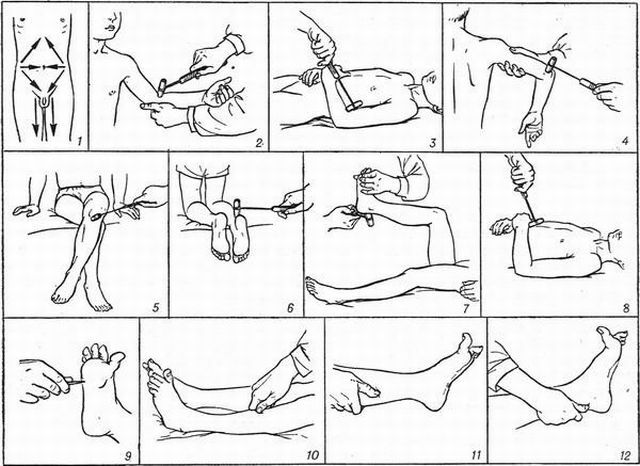 Have you ever wondered what is the normal length of sleep specifically for you?
Have you ever wondered what is the normal length of sleep specifically for you?
Some will say that it is not, some will be convinced that the longer the dream, the better, because sleep is a guarantee of health, and someone and five hours will be enough.
However, is this correct? Perhaps the failure in sleep duration is the first sign of any disease?
Contents
- When you always want to sleep
- Different types of pathological drowsiness
- Why does this happen?
- Detect uncomplicated
- Narcotics type disorder
- Psychopathic type
- Disorder after trauma
- Idiopathic type of disorder
- Diagnosis
- How to restore normal sleep duration?
When you always want to sleep
Few people have heard that there is such a disease as hypersomnia.
During the course of the disease, the duration of a night's sleep increases, and there is also a feeling of drowsiness during the day. It is very important to distinguish between hypersomnia and banal lack of sleep, which happens occasionally with everyone.
In contrast to hypersomnia, insomnia, more commonly known as insomnia, appears. Its manifestation almost all patients notice immediately, without the advice of specialists.
The characteristic features of insomnia are the inability to sleep in accordance with its norm, as well as frequent awakenings during sleep.
 Violation of pronunciation in children with good hearing dyslalia - what methods of correction does medicine offer in our time?
Violation of pronunciation in children with good hearing dyslalia - what methods of correction does medicine offer in our time? If the sense of space in a person is lost, then what does it say? Why does dysmetry arise and in what ways to protect yourself from this disorder?
Different types of pathological drowsiness
In the classification of a disorder in medicine, the etiological principle is often used.
For reasons of origin, the following types of hypersomnia can be distinguished:
- psychophysiological;
- narcolepsic;
- is idiopathic;
- is post traumatic;
- is psychopathic;
- associated with somatic ailments.
Different forms of the disorder:
- The permanent form of is characterized by a constant, monotonous desire to sleep. Drowsiness accompanies the person
 continuously throughout the daylight hours.
continuously throughout the daylight hours. - The paroxysmal form of is characterized by sudden attacks of drowsiness. The main feature of this condition is that people are almost unable to control the desire to sleep. With paroxysmal form, there are cases of sudden falling asleep in places completely unsuitable for rest( for example, a bus, a subway, a long line, lectures at the institute, etc.).
The processes of sleep and wakefulness in humans work thanks to the complex interaction of the cerebral cortex, subcortex, reticular formation, and limbic system.
When a mechanism that functions as a clock breaks down( or at least one of its components), malfunctions occur in the functioning of the whole organism.
Why does this happen?
Violations of a well-functioning system can be caused by a variety of factors. Prolonged and systematic lack of sleep, prolonged moral and physical fatigue, consequences of stressful situations, nervousness.
In addition, among the common reasons why there is hypersomnia can be noted the taking of some medications.
This condition is a side effect of the drug, which can both be manifested and not.
The disorder can occur on the basis of the injuries sustained, the consequences of which are disorders of the central nervous system.
Also to the causes of the disease include:
- tumors, hematomas, abscesses developing in the brain;
- diseases caused by the infectious nature of origin;
- disorders of vascular activity.
To find out easily
To determine the disease yourself, you do not need to have any special medical knowledge.
The main feature of the disease is a drowsy condition that accompanies a person periodically( bursts) or constantly during the day after a long night's sleep.
 Under prolonged sleep it is customary to understand its duration about 12 - 14 consecutive hours .
Under prolonged sleep it is customary to understand its duration about 12 - 14 consecutive hours .
In the presence of hypersomnia, it is quite hard for a person to wake up, get up on an alarm clock, start to stay awake and start daily activities.
Patients with a diagnosed diagnosis after awakening hard to develop mental activity.
This condition is best described by the saying "Raise raised, but forgotten!".Outwardly, it may appear that a person is simply just drunk.
When the manifestation of the disease in the daytime, as discussed already a little higher, there may be a constant and sudden drowsiness.
With this form of disorder, brain activity, mindfulness, memory and general working capacity of a person worsen. Lethargy and slowness of actions are observed.
Typically, patients with a similar disease are forced during the day to interrupt for sleep. Some become lighter after this, but in most cases drowsiness and false fatigue do not go anywhere.
Narcoleptic type of disorder
Experienced patients with an ailment for a long time are able to feel an approaching attack. They try to find a place and take a comfortable pose for a more comfortable sleep.
With narcolepsy during sleep and awakening, a person can see a hallucination. In some cases, a few minutes after awakening, patients can not move limbs, since the muscles are in a completely relaxed state.
Psychopathic type
Psychopathic hypersomnia is unique in its manifestations in that it can show an absolutely unpredictable clinical picture.
There are times when a person falls asleep for a few days, while EEG surveys show activity and vigor in the patient being examined.
Disorder after
trauma The development of posttraumatic hypersomnia is most often associated with a stressed stress due to a trauma with little damage.
Its manifestation, in most cases, is similar to the psychopathic state of the patient.
Idiopathic type of disorder
Idiopathic hypersomnia is a disease that most often affects young people aged 15 to 30 years.
The manifestation of a disease can be accompanied by a symptom of "drunken sleep".
Diagnosis of
The diagnosis of the disease is performed using the commonly accepted tests of sleep latency and the Standford sleepiness scale. 
At the examination appoint a neurologic examination, ophthalmoscopy, Echo-EG,
Also appoint CT of the brain or MRI.
The diagnosis is made by a neurologist.
How to restore normal sleep duration?
Treatment of hypersomnia in most cases is possible. If the form is very heavy, then the specialists select a course that maximizes the patient's quality of life.
For this, the patient must adhere to a certain regime, in which he will regularly go to bed and wake up. The optimal length of night sleep is 9 hours.
Plus, you need to organize for yourself 1 - 2 daytime sleep for a short duration of 45 minutes. Such patients are not recommended to work at night and in the evening.
 To eliminate drowsiness during the day, doctors prescribe stimulants. These drugs are prescribed exclusively by specialists individually, taking into account specific manifesting symptoms.
To eliminate drowsiness during the day, doctors prescribe stimulants. These drugs are prescribed exclusively by specialists individually, taking into account specific manifesting symptoms.
As a rule, posttraumatic hypersomnia is characterized by recurrences of manifestation. For patients suffering from narcotics, things are much worse.
Drowsiness, in principle, does not in any way threaten human health, but it is statistically noticed that such patients are much more likely to get into car accidents, accidents at work and at home.



